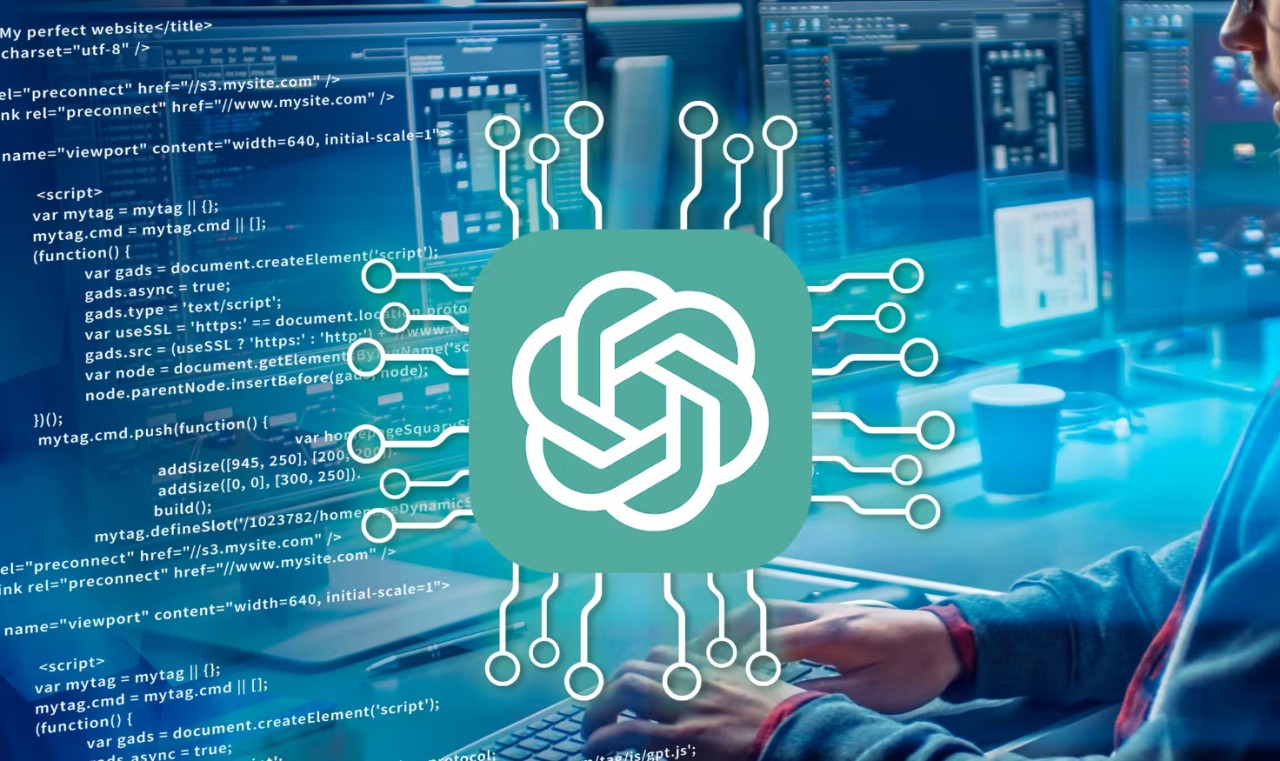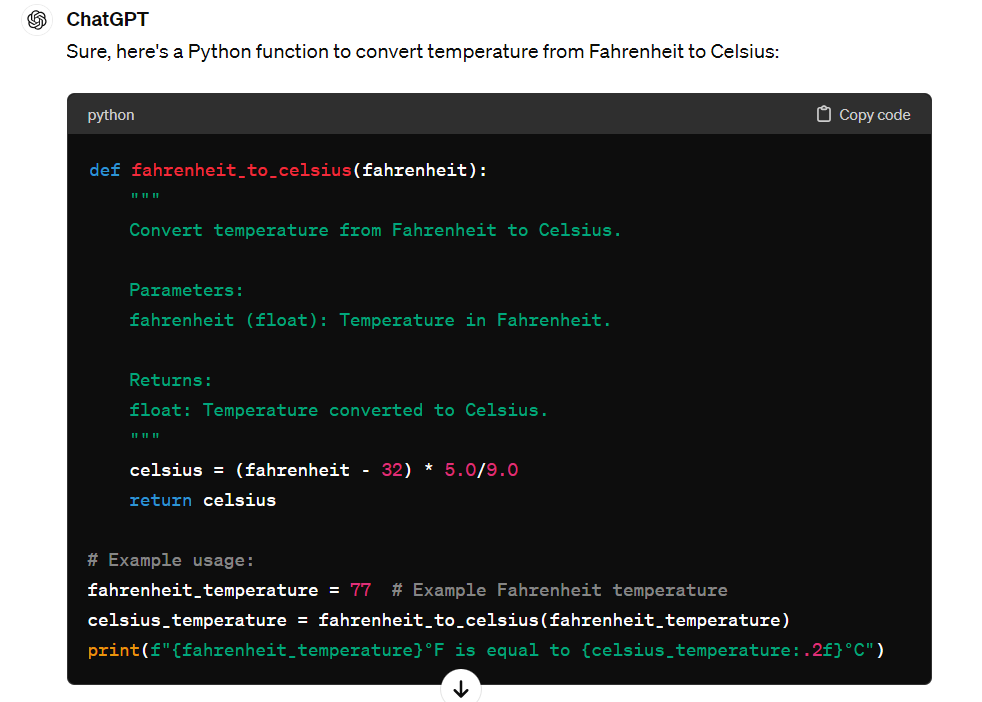How to Use ChatGPT for Python (2024)
ChatGPT, the most popular Large Language Model developed by OpenAI. It's a powerful language model that can engage in human-like conversations, understand and respond to prompts, and generate text. It can be a valuable tool for both Python developers and data scientists in various ways.
ChatGPT offers numerous benefits and can enhance and expedite the process of learning Python. In today's article, we will explore how you can effectively use ChatGPT for Python and, of course, provide some prompts as examples to better showcase its capabilities.
How to Use ChatGPT for Python
Among the most basic uses of ChatGPT for Python, we have gathered the following.
.jpg)
Use #1: Assistance in the Creation and Improvement of Python Code
Using ChatGPT as an assistant in the process of creating Python code is particularly significant during the learning and hands-on journey with Python. The ChatGPT interface facilitates debugging and code improvement by providing personalized help for identifying issues in the code, explaining the reasons behind the errors, and even offering corrected code examples to resolve the bugs. Additionally, it's worth noting that while some Python programming techniques, like using dictionary keys to solve problems such as the FizzBuzz (FizzBuzz is a simple programming task, often used in software developer job interviews, to determine whether a candidate can actually write code. The task is designed to test basic programming skills like understanding of loops, conditions, and basic syntax) , can introduce complexity and potential errors, making the code hard to read and sometimes incorrect.
ChatGPT can help both Python developers and data scientists improve their code and learn new concepts. When optimizing a specific algorithm or further enhancing the readability of your code, submitting a code block to ChatGPT for analysis can be incredibly beneficial.
While it cannot replace a human mentor or a bootcamp, it can offer valuable information and suggestions. Furthermore, to discover new concepts and meanings, such as “what is the concept of context managers in Python”, you can ask questions like “Explain the concept of context managers in Python and provide an example using the with statement.” ChatGPT can help interpret error messages to learn from mistakes, enhancing the learning process. Additionally, asking ChatGPT to explain programming concepts like exception handling can significantly improve the robustness of your code.
Use #2: Creation of a Web Development Learning Roadmap
Continuing, ChatGPT can create a step-by-step learning roadmap for specific topics of your choice and based on your goals. For example, a Python developer who is relatively new to web development with Django (a high-level Python web framework) can request ChatGPT to create a learning path to start more easily.

Use #3: Instant Python Program Code Generation
ChatGPT can be used as an intelligent code generation tool. So you can use ChatGPT to create code snippets for various tasks, including generating a python program for data analysis tasks, showcasing its capability for practical application in instant code generation. You can, for example, ask ChatGPT to show you a Python function to convert a certain temperature from Fahrenheit to Celsius.

Now that we’ve seen some basic uses of ChatGPT for Python, let’s continue by seeing some indicative prompts that you can give to ChatGPT for Python.
Basic ChatGPT Prompts for Python and Natural Language Processing
Earlier, we mentioned that one of the significant uses of ChatGPT for Python is creating a roadmap for studying Python through user input. A prompt, a request to the tool, could be as follows:
“Act as a programming mentor. I want to learn Python for Data Science. Create a roadmap to learn Python each week and add resources to study each week based on my user input.”
Continuing, another prompt from GitHub, equally useful for executing Python code with user input, is the following:
“I want you to act like a Python interpreter. I will give you Python code, and you will execute it based on the user input provided. Do not provide any explanations. Do not respond with anything except the output of the code. The first code is: ‘print(‘hello world!’)’”
Furthermore, for someone who is a beginner in Python, they can start with a simple prompt like the following:
“Given a list of numbers in Python, write a function that returns the sum of all even numbers based on user input.”
.jpg-(1).jpg)
Additionally, if you are at a slightly more advanced level and want to implement a specific function with user input, you can use ChatGPT to get ready-made code or a strong foundation, supplementing it with your own code.
Let’s look at an example for better understanding.
If we use the prompt “Create a simple python application that prints the current temperature in Athens, Greece, using user input,” we can see that ChatGPT generates code that, when executed, displays the current temperature in Athens.
.jpg-(1).jpg)
So, we see that ChatGPT can generate code that calls APIs, such as the OpenWeatherMap API in this case.
To Sum Up
We have seen in detail how you can effectively use ChatGPT for Python, incorporating natural language processing to enhance its utility in various Python programming tasks. We have also provided some example prompts for better understanding.
As mentioned earlier, ChatGPT is an excellent tool that can assist in the process of learning Python, showcasing its versatility as a programming language. Its integration into Python applications demonstrates the broad applicability of ChatGPT in different settings, from simple scripts to complex web applications.
Thus, if you are intrigued and want to learn more about this topic and more, follow us and we will keep you posted!
Remember: While ChatGPT can be a helpful tool, it's important to verify the code it generates and to understand the underlying concepts. It's not a replacement for learning Python fundamentals.


.jpg)